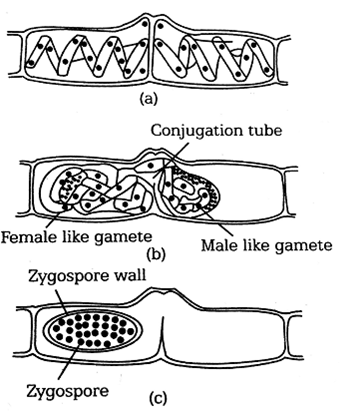 Multiple Choice Questions
Multiple Choice QuestionsWhich one of the following is correctly matched?
Onion – Bulb
Ginger – Sucker
Chlamydomonas – Conidia
Chlamydomonas – Conidia
How many plants in the list given below have composite fruits that develop from an inflorescence?
Walnut, poppy, radish, fig, pineapple, apple, tomato, mulberry
Four
Five
Two
Two
Vexillary aestivation is characteristic of the family
Fabaceae
Asteraceae
Solanaceae
Solanaceae
Which one of the following organisms is correctly matched with its three characteristics?
Pea: C3 pathway, Endospermic seed, Vexillary aestivation
Tomato: Twisted aestivation, Axile placentation, Berry
Onion: Bulb, Imbricate aestivation, Axile placentation
Onion: Bulb, Imbricate aestivation, Axile placentation
How many plants in the list given below have marginal placentation?
Mustard, Gram, Tulip, Asparagus, Arhar, Sun hemp, Chilli, Colchicine, Onion, Moong, Pea, Tobacco, Lupin
Four
Five
Six
Six
Plants with ovaries having only one or a few ovules, are generally pollinated by
Bees
Butterflies
Birds
Birds
Which one of the following shows isogamy with non-flagellated gametes?
Sargassum
Ectocarpus
Ulothrix
Ulothrix
D.
Ulothrix
Isogamy with non-flagellated of gametes is seen is Spirogyra can reproduce both by sexual and asexual (vegetative) means.

